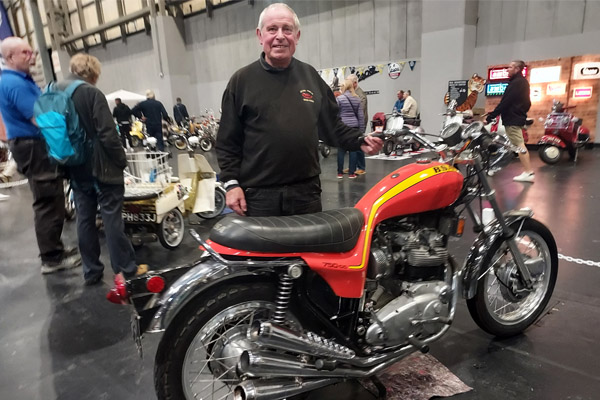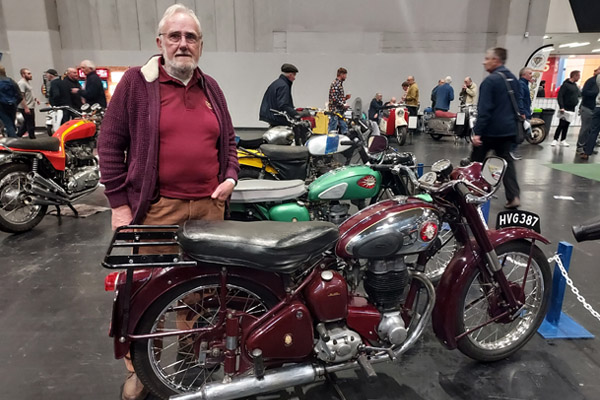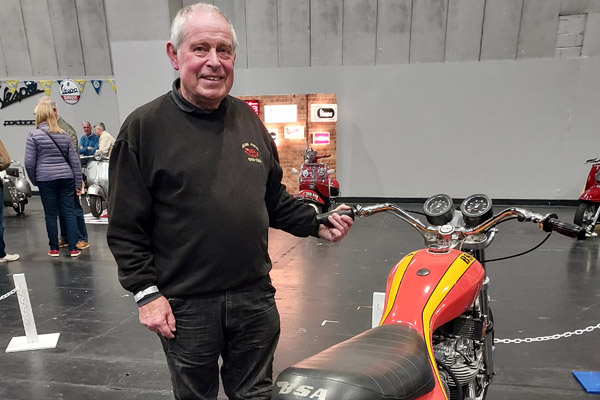8 April 2025
As classic bike values are variously subject to post-pandemic "correction" and yo-yo-ing, it's refreshing to hear of at least one club which isn't obsessed with investment - despite one its own machines arguably responsible for lighting the blue touch-paper of collectability. Iain Macauley, automotive journalist, explores the topic further.
The BSA Owners' Club's members - founded in 1958 - are far more interested in finding, restoring, owning and riding old bikes than what they'd make at auction.
But the BSA Gold Star, produced between 1939 and 1963, and given the name after one of its "Empire Star" machines lapped Brooklands race circuit at more than 100mph in 1937, is arguably the first must-have classic.
The thing is whether every Gold Star out there is actually a Gold Star - or is it a 500cc lookalike?
Such matters do niggle BSA Owners' Cub members, but a few minutes on their stand at this year's Classic Car Show's Classic Bike Showcase provide clear direction on their collective thoughts.
Bill Nelson, from the club, explains: "BSA values are fairly stable. But back in the 1980s, you had this weird concept in classic cars and classic bikes come up. The word 'originality' was invented. Before then, that word didn't exist in classic bike circles.

"We all did what we wanted with our bikes; we still do - I certainly do.
"But on the back on this 'originality' thing, 'investment' came along. But an investment is only an investment if you can afford everything you've invested, and if another person is prepared to pay more than you to buy your investment off you. That's how you show your gain."
BSA owners, he says, are far more interested in tinkering with and riding their bikes with little thought as to what they may be worth.
"I mean, I've got an ex-Birmingham Police A65 650 which I tell everybody is totally original - because everything on it was originally on something else," he adds with the grin of somebody who enjoys motorcycle mischief.
And it's more mischief when he considers the current motorcycling environment: "With the economy as it is, with government moves against motorcycling, which is blatantly silly given they've got a green agenda, and yet one of the most green forms of transport is classic bikes.
"And there's a safety aspect that motorcyclists are known to be better car drivers."
But he hasn't finished with motorcycles as investments: "The investors are now getting their fingers burnt, with 'investment grade' bike values - whatever that is - coming down.
"But our bikes are actually used and we're quite happy with that. We don't value anything other than what it costs us to buy them and keep them going. I've got five bikes and I don't say, oh, there's £30,000, £40,000; no, they're actually what they cost me. And it's a hobby."
If somebody plays golf, he says, they never think of having a particular value in mind when it comes to their clubs or equipment.
"So why should we with motorbikes?"
And use his he certainly does: "I'll be taking one next year to visit my daughter in Switzerland. I'll go on one of the old BSAs, probably the oldest one, the 1961 500, and I'll ride it all the way there."
Does such distance bother him on a machine with a reputation - quite possibly without as much foundation as legend would have us believe - of enthusiastically leaking crucial fluids?

"No, I'll ride all the way there on it.
"I had a business meeting in Alicante some years ago and everybody else was flying there. Well, I used to work in Europe and had had my fill of hotels and aeroplanes so I put a tent on the back and I rode the bike to Alicante.
"No motorways, no toll roads and no maps, no satnav - just a technique we use called FTFW: follow the front wheel on a 3,000 mile round trip. Best trip I've ever done.
"Absolutely no problems with the bike - why should there should be?"
"It was just a bike out for a country ride."
Or, more accurately, several countries' ride...


COMMENT